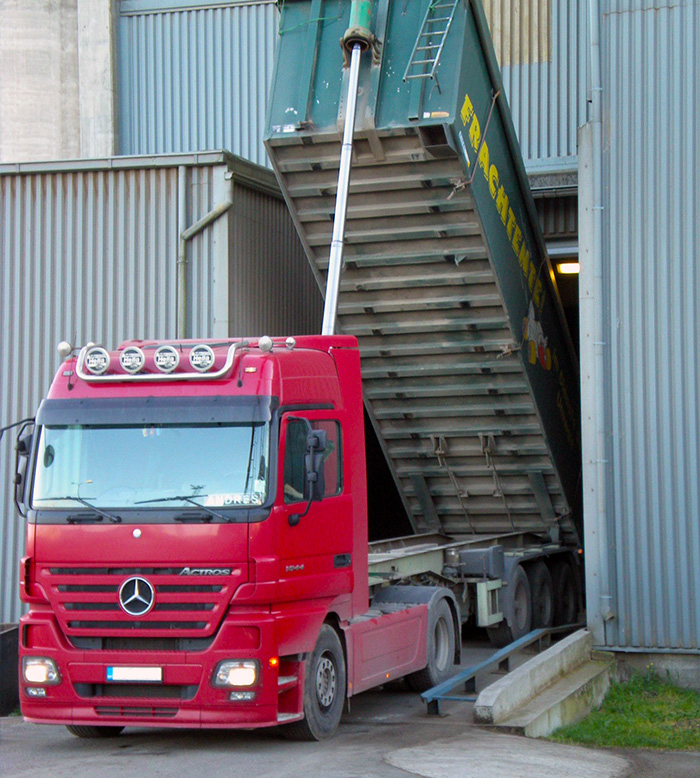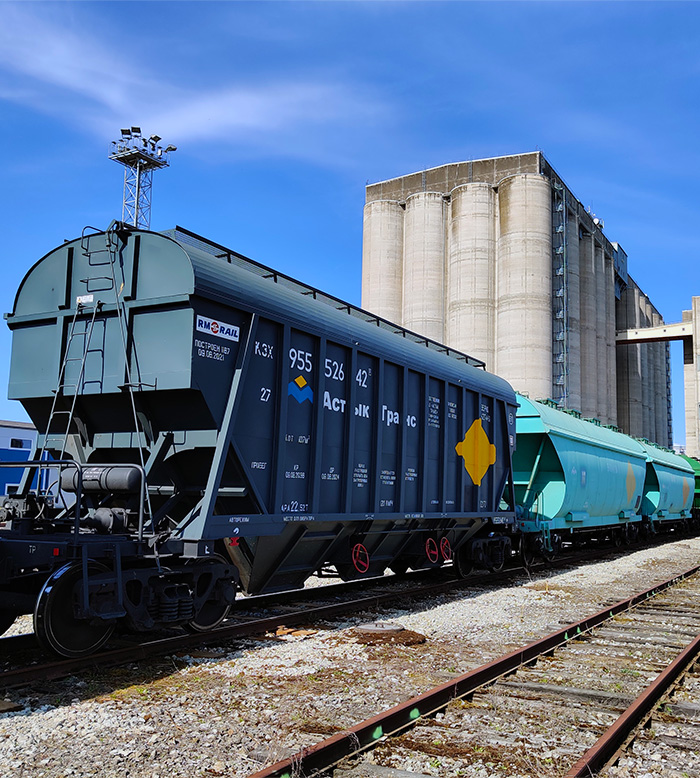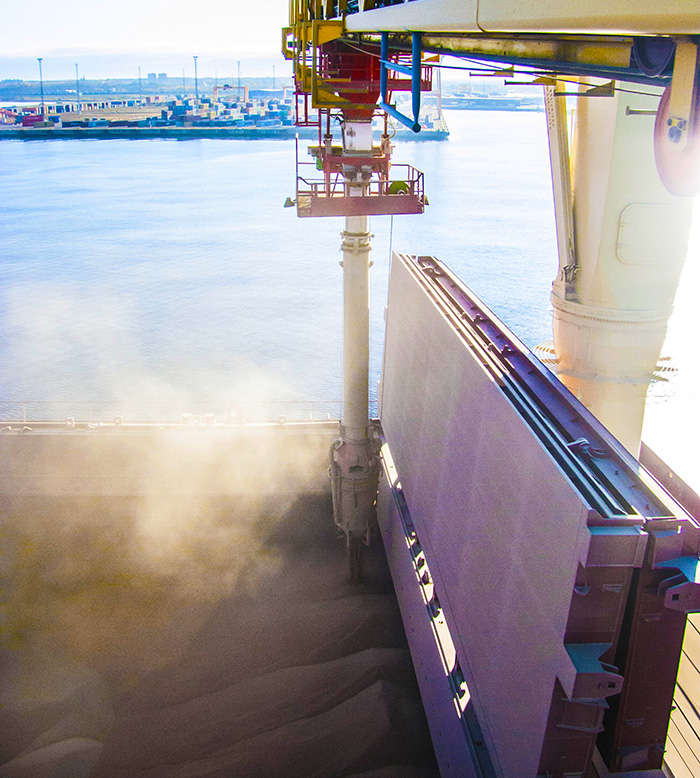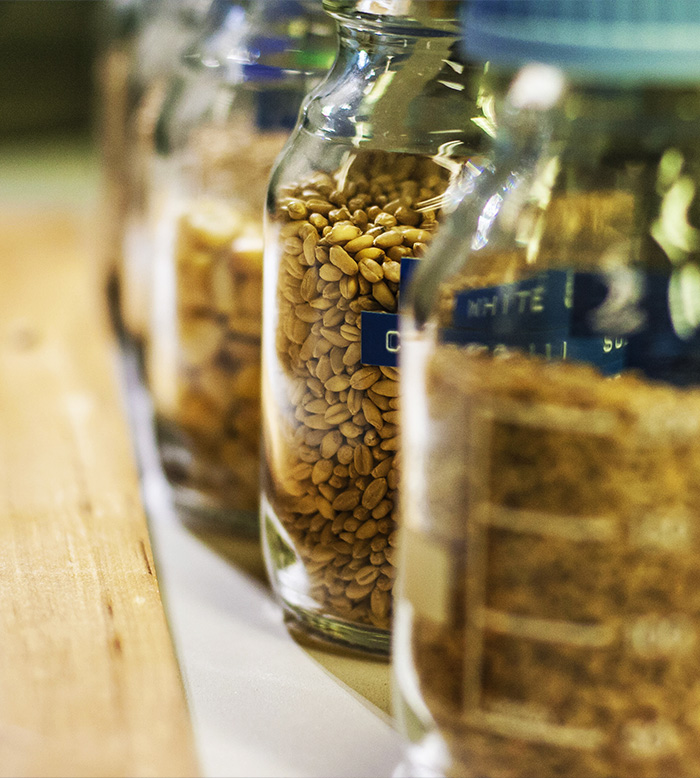


The terminal is equipped with three independent grain receiving stations (No. 4, No. 7, No. 8). Grain unloading 200 trucks per day. Grain loading 40 trucks per day.
The grain can be loaded and unloaded at any time of the day, including when there is precipitation.
If separate storage is required, the trucks are sorted by clients, type and quality of grain. Sorting is performed after sampling and weighing the trucks.


The rail cars are loaded automatically on four railway tracks equipped with shunting winches, each of which can load two rail cars simultaneously or up to 300 hopper cars per day.
The rail cars are unloaded on one railway track, where two rail cars can be unloaded simultaneously or up to 160 hopper cars per day.
The terminal has its own railway tracks with a total length of 5.5 km, which allows simultaneously accommodating up to 344 hopper cars. The tracks are integrated into the Estonian railway system, which are connected to the international railway system of Europe and Asia through the Narva-Ivangorod, Koidula-Pechory and Valga-Valka border crossing points.


The terminal uses deep-water berths with a depth of 17.5 m and a length of 330 m and can handle ships with a deadweight of up to 150,000 tons.
Ships are unloaded at berths No. 9, No. 10 by four Bühler reloaders, two of which are mechanical - with a capacity of up to 1000 t/h and two are air-operated for cleaning holds - with a capacity of up to 250 t/h each. The unloaded grain undergoes mechanical treatment and magnetic separators. When unloading, grain is sampled in regular manner using automatic samplers and delivered by pneumatic sample transportation systems to the laboratory for analysis.
Ships are loaded at berth No. 10 by a Bühler reloader with a capacity of up to 1000 t/h. The grain entering the ship is weighed on the certified elevator scales, which are annually verified and calibrated according to the EVS 745:2010 standard and send a grain sample in regular manner by pneumatic sample transportation system to the laboratory for analysis.


The elevator allows to place different types of grain separately from each other. If separate storage is required, grain is sorted by clients, type and quality of grain. During storage, the grain temperature in each of the silos is monitored using temperature sensors.


The terminal uses motor-truck scales that are annually verified and calibrated according to ISO 9000:2015 standard and have a METAS-Cert certificate of conformity No. 511-00698. All information from the scales is automatically processed and stored in a special accounting program. Based on the cargo weighing and accounting results, a weight list is issued to the client or the data is entered into the client accounting program.
Weighing trucks with grain and other cargo is an additional service of our terminal.


The terminal is equipped with a laboratory that determines the parameters of grain crops, oilseeds and legume crops.
Grain is analyzed in the laboratory according to international standards (ISO 7971 - 3:2019, ISO 712:2009, ICC 155:1994) and domestic standards (EVS-EN ISO 3093:2010, EVS-EN ISO 11587:2019, EVS 679:2014, EVS-EN ISO 24333:2010).
The main task is to assess the quality of grain in samples at the stage before unloading the grain into the elevator.
To study the grain parameters in our terminal, we use: Perten Inframatic 9500 analyzer, Perten 3100 and Perten 3300 grain mills, SANYO drying chambers, Pfeuffer HOH-EXPRESS HE 50 humidity meters, Mettler Toledo PG-S, Mettler Toledo SG 3200 and Sartorius L610 laboratory scales, devices that determine the falling number and the quality of Perten fibrin.